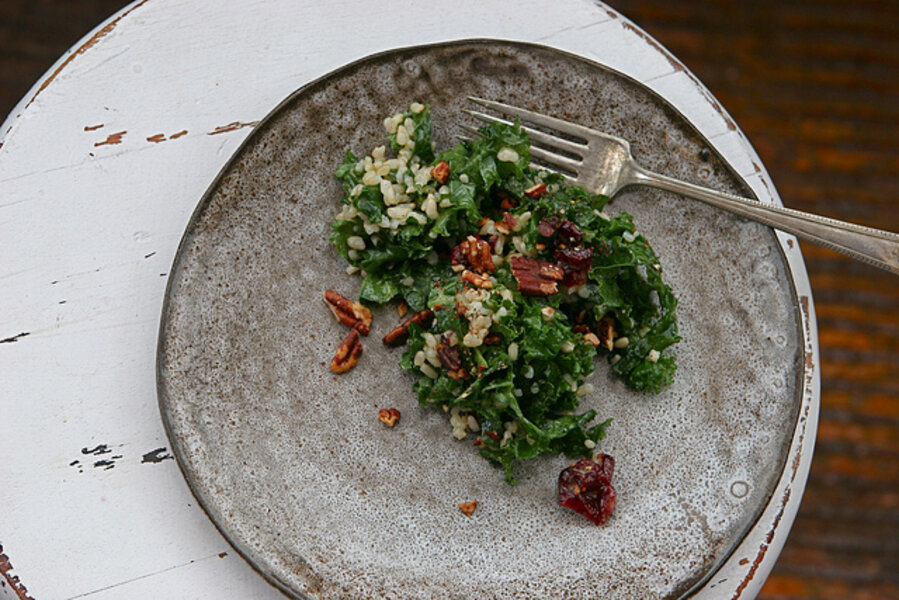By Sarah Murphy-Kangas, In Praise of Leftovers
You could use white rice, barley, quinoa ... so many other grains here. The important thing is that it's had a chance to cool down a little bit so the grains can separate. If you can't cook it ahead of time and chill it, just spread it out in a very shallow layer, drizzle a little bit of olive oil over it, and stir it occasionally to release the steam.
4 cups cooked grain (I made brown rice in my rice cooker the day before)
1 large bunch curly green kale, de-stemmed, washed, dried, and coarsely chopped
1/2 cup toasted pecans, coarsely chopped
2 tablespoons honey
Salt and pepper
2 garlic gloves
4 tablespoons apple cider vinegar
1/4 cup olive oil
1/2 red onion, thinly sliced
1/2 cup dried cranberries
For dressing
Combine honey, salt and pepper, garlic, vinegar, and olive oil with an immersion blender. (Or with a whisk if you use a garlic press.) Add more of anything to taste. Drop the sliced onions and dried cranberries into the dressing to marinate.
To assemble salad
In a large bowl, combine rice, kale, and dressing. I use my hands. Make sure everything is covered with the vinaigrette. That's what makes this salad. Scatter the toasted pecans over the top and maybe a little more coarse salt and pepper.








